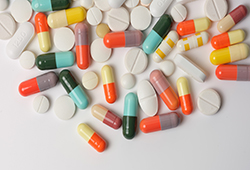USPTO Emphasizes Searches of FDA Databases for Pharmaceutical Patent Applications
 In response to Biden Administration goals regarding increasing pharmaceutical competition and lowering drug prices, the USPTO recently released training provided to the USPTO examining corps on utilizing publicly available FDA and NIH databases for prior art searches. The goal of the training is to ensure that all relevant prior art is considered by examiners when assessing patentability. As with disclosures on clinicaltrials.gov, drug labels and drug approval information are publicly available and thus may qualify as prior art.
In response to Biden Administration goals regarding increasing pharmaceutical competition and lowering drug prices, the USPTO recently released training provided to the USPTO examining corps on utilizing publicly available FDA and NIH databases for prior art searches. The goal of the training is to ensure that all relevant prior art is considered by examiners when assessing patentability. As with disclosures on clinicaltrials.gov, drug labels and drug approval information are publicly available and thus may qualify as prior art.
This training is related to initiatives outlined in President Biden’s Executive Order (EO) 14036 entitled “Promoting Competition in the American Economy,“ signed on July 9, 2021. In this EO, President Biden stated his administration’s goal of increasing competition in the pharmaceutical space and lowering prescription drugs prices. As part of this goal, President Biden instructed the Commissioner of Food and Drugs to write a letter to the Director of the USPTO describing any relevant concerns of the Food and Drug Administration (FDA) with respect to USPTO procedures. In its response to the FDA letter, the PTO outlines several initiatives, including working with the FDA to develop training materials for the patent examining corps on searching publicly available FDA resources (e.g., FDA and NIH databases) for prior art and to assess the state of the art in the pharmaceutical and biopharma areas.
On March 20, 2024, the USPTO released new training materials (“March 2024 Training Materials”) it developed in conjunction with the FDA for the examining corps regarding use of FDA and National Institutes of Health (NIH) databases to search for prior art. The March 2024 Training Materials outlines search strategies for use with various FDA and NIH public databases, including:
- FDALabel – FDALabel (current drug labels) contains “over 140,000 human prescription, biological, over-the-counter and animal drug label documents.” This database allows for complex queries, including with structures, and “[m]ay be used to find information on indications, dosage and administration, contraindications (including warnings, adverse reactions, drug interactions, or information about use in particular populations of patients).”
- Drugs@FDA – Drugs@FDA gives examiners access to current and retired drug labels, along with non-label content such as FDA reviews, regulatory history, and approval letters. This database covers prescription brand-name drug products, generic drug products, therapeutic biological products, and OTC brand-name and generic drugs.
- DailyMed – DailyMed (current drug labels; operated by the NIH) contains labeling information on prescription drug and biological products for human use, OTC drugs and biological products, medical devices, medical gases, and prescription and nonprescription drugs for animal use. This database doesn’t permit structure searches but does provide “publicly available” dates that can be used to establish the effective date of the disclosure. Information available in this database includes usages/indication, dosage/administration and forms/strengths.
- DailyMed Archive – DailyMed Archive provides retired drug labels for prescription drug and biological products for human use, OTC drugs and biological products, medical devices, medical gases, and prescription and nonprescription drugs for animal use.
 In this webinar,
In this webinar, 
 This is the first of two articles focused on 2023 life sciences deals in China. The second article, which is coming soon, looks at trends in M&A.
This is the first of two articles focused on 2023 life sciences deals in China. The second article, which is coming soon, looks at trends in M&A.  On February 12, 2024, the US Patent Office and Trademark Office (USPTO) released the Inventorship Guidance for AI-assisted Inventions (
On February 12, 2024, the US Patent Office and Trademark Office (USPTO) released the Inventorship Guidance for AI-assisted Inventions (